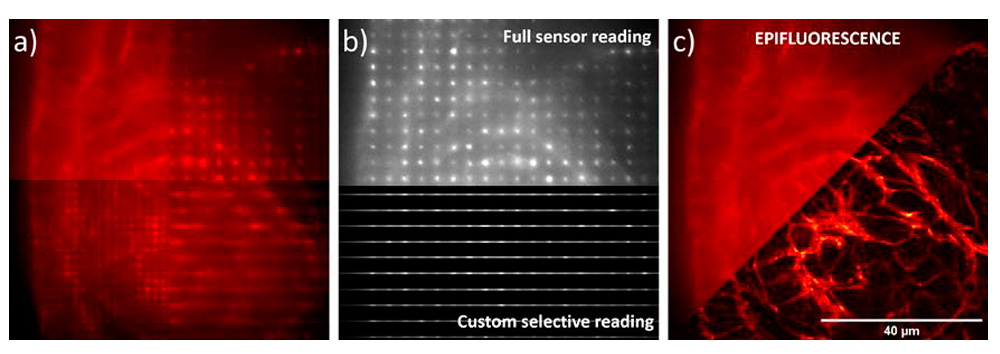©SCORED
What has the ATTRACT seed funding enabled you to do so far?
We have identified a new modality of super-resolution optical microscopy with the potential to go beyond the 100 nm mark at video rates. We expect that a U-net neural network will be able to extract this information from actual biological samples in a very efficient manner in the upcoming months.
What challenges have you faced so far?
The existence of a new type of super-resolution stemming from the particular way in which we scan the sample was merely a hypothesis at the beginning of the project. It took a theoretical effort to confirm this. We have also found a problem with the training of the U-net. We are currently obtaining super-resolution imagery with a suboptimal algorithm as the neural network does not still generalize appropriately from the training set. It fails spectacularly when confronted with real imagery but we aim at fixing this before the project ends.
Where does your ATTRACT journey go from here?
The ATTRACT project is a high risk, high reward subproject within a multi-year effort devoted to develop the first commercial programmable array microscope (PAM). This type of microscopy is a holy grail in the visualization of biological samples as it can encompass multiple confocal modalities in a single instrument. We think that we have developed the optical technology to make this long sought-after concept a reality. We have patent applications covering the core technology and are ready to start a company to commercialize this innovation within the next two years.
Sum up in two sentences the advantages of the ATTRACT Programme over other research funding schemes.
It allows highly ambitious, high-risk projects nurtured within a single research group and at the inception level to progress to the proof-of-concept stage within a short time horizon with the right funding intensity. Other programs require minimal participation schemes that often entail the conjugation of multiple interests or are not ambitious enough.
For more information
Visit the SCORED project site


